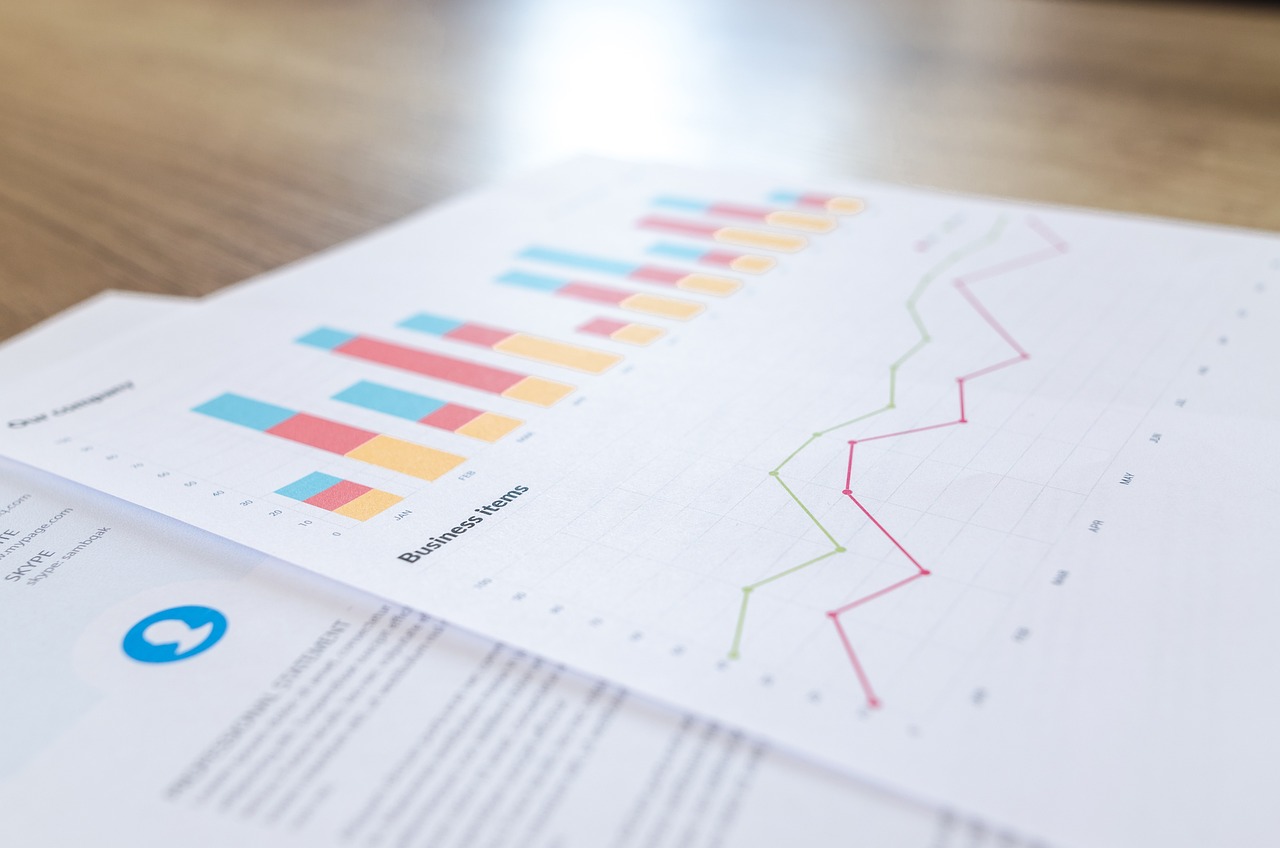

Understanding financial modelling
Financial modelling is a term that rarely leaves the corporate finance world. It sounds complicated and honestly, it really can be. However, most people interested in growing their business will have conducted some form of financial modelling whether they realize it or not. It’s actually an obvious way to assess any important decision you need to make.
What is financial modelling?
Financial modelling is the process of creating a mathematical representation of a company’s financial situation. It involves using historical financial data, current market conditions, and future projections to create a financial model that can be used to evaluate the company’s performance, make predictions about future financial outcomes, and make informed business decisions.
Financial models can take many forms, but typically involve creating a series of financial statements, such as income statements, balance sheets, and cash flow statements, that reflect the company’s financial performance over time. These statements are used to create a range of financial ratios that can be used to evaluate the company’s financial health.
Your business is a complex system with a lot of interrelated activities. Financial modelling is a tool that can help you understand the financial ramifications of various ‘what-if’ scenarios.
A financial model is a tool used to make predictions and projections about the financial performance of a business or investment opportunity. They can be used for a variety of purposes, including:
Forecasting future financial performance
Financial models are often used to forecast future revenue and profit potential, as well as to estimate the cash flow requirements of a business.
Assessing investment opportunities
Financial models can be used to evaluate investment opportunities by estimating the expected return on investment (ROI) and the potential risks associated with a particular investment.
Valuing businesses
Financial models can also be used to value businesses, by estimating the present value of expected future cash flows.
Making strategic decisions
Financial models can provide valuable insights into the financial implications of strategic decisions, such as entering a new market, launching a new product, or investing in a new technology.
Overall, financial models are essential tools for decision-making in the world of finance and business, providing valuable insights into the potential outcomes of different scenarios and helping to guide investment and strategic decisions.
How do you build a financial model?
The process of building a financial mode typically involves the following steps:
1. Define the purpose
Determine the purpose of the financial model and the specific questions that it will be used to answer. For example, the model may be used to project revenue and expenses, calculate net present value or perform a sensitivity analysis.
2. Gather data
Collect relevant financial and operational data, including historical financial statements, market research, and other relevant information.
3. Define the assumptions
Define the key assumptions that will drive the financial model, such as revenue growth rates, cost of goods sold, operating expenses, and capital expenditures.
4. Build the model
Use a spreadsheet program like Microsoft Excel or Google Sheets to create a financial model. The model should include income statements, balance sheets, and cash flow statements, as well as supporting schedules and calculations.
5. Test and validate the model
Test the model using historical data to ensure that the calculations are accurate and the projections are realistic. Validate the model by comparing its results to actual financial performance.
6. Use the model
Use the financial model to make informed decisions and identify areas for improvement. Regularly update the model with new data to ensure that it remains relevant and accurate.
It is important to note that building a financial model can be a complex and time-consuming process. It may be helpful to consult with financial professionals, such as accountants or financial analysts, to ensure that the model is accurate and reliable.

How can you learn financial modelling?
Here are some steps that can help you learn financial modelling:
Learn the basics of finance
Before starting with financial modelling, you need to have a good understanding of finance concepts like time value of money, present value, future value, cash flows, and financial statements.
Choose the right tool
There are several tools that can be used for financial modelling like Excel, Python, and specialized software like MATLAB or Mathematica. Choose the one that suits your needs and start practicing.
Practice
The key to mastering financial modelling is practice. Start with simple models and gradually move to complex ones. There are several online resources like Investopedia and Wall Street Prep that provide courses and exercises to help you practice.
Build your own models
Try to build your own models based on real-world scenarios. This will help you gain practical experience and improve your skills.
Learn from others
Networking with professionals in the finance industry can provide valuable insights and guidance on financial modelling.
Get certified
Certifications can help you showcase your skills and stand out in the job market.
Remember that financial modelling requires a combination of technical skills and domain knowledge. So, keep learning and practicing to master this skill.
An example of financial modelling
An example of financial modelling could be creating a model to evaluate the financial performance of a company over the next three years. The model could include projections for revenue, expenses, and profits based on historical data, industry trends, and other factors. The model could also include assumptions about changes in the market or the competitive landscape, as well as the impact of potential new products or services.
To create the model, the analyst would need to gather data on the company’s financial statements, as well as external data sources such as market reports and industry benchmarks. The analyst would also need to make judgments about key assumptions and parameters, such as the growth rate of the company’s revenue and the expected level of competition in the market.
Once the model is created, the financial analyst could use it to evaluate different scenarios, such as the impact of changes in pricing, marketing, or product development on the company’s financial performance. The model could also be used to create a business plan or to evaluate potential investments in the company.
How much accounting knowledge is required for financial modelling?
While some level of accounting knowledge is necessary to create effective financial models, the specific level of accounting knowledge required depends on the complexity of the model and the type of financial analysis being performed.
At a minimum, a solid understanding of basic accounting principles, financial statements (balance sheet, income statement, and cash flow statement), and financial ratios is necessary for financial modelling. It is also important to have a good grasp of financial analysis techniques, such as discounted cash flow analysis, ratio analysis, and sensitivity analysis.
However, for more complex financial modelling tasks, such as modelling mergers and acquisitions, valuation analysis, or forecasting financial performance, a more advanced understanding of accounting principles may be necessary.
Overall, while it is possible to create financial models without a deep understanding of accounting principles, a basic understanding is necessary to ensure the accuracy and usefulness of the model.
Financial modelling is not accounting
Financial modelling and accounting are related but distinct fields. While both deal with financial data and analysis, they serve different purposes and require different skills.
Accounting involves the recording, summarizing, and reporting of financial transactions of a business. It includes preparing financial statements such as balance sheets, income statements, and cash flow statements to provide an accurate picture of a company’s financial health. Accounting is mainly concerned with past financial transactions and the analysis of historical data.
On the other hand, financial modelling involves creating a quantitative representation of a business or financial asset using mathematical and statistical models. It is used to forecast the future financial performance of a company or investment, often to support decision-making such as valuation, investment analysis, and risk assessment. Financial modelling uses data from accounting and other sources to create projections and scenarios, which can be used for strategic planning, budgeting, and investment analysis.
In summary, while both financial modelling and accounting involve financial analysis, they differ in their purpose and the skills required. Accounting focuses on recording and analyzing past financial transactions, while financial modelling uses historical data to project and forecast future financial performance.
Financial modelling in Brixx
Specialised financial modelling tools like Brixx exist to automate the modelling process for you. You can sign up to Brixx and receive a number of templates and guides on financial forecasting and management. We can help you set up a well-designed forecast which allows for sensitivities and different scenarios to be modelled. This can help you see how a change in assumptions impacts your company’s future financial position.
- Recommended Reading – Choosing a better financial projections template













